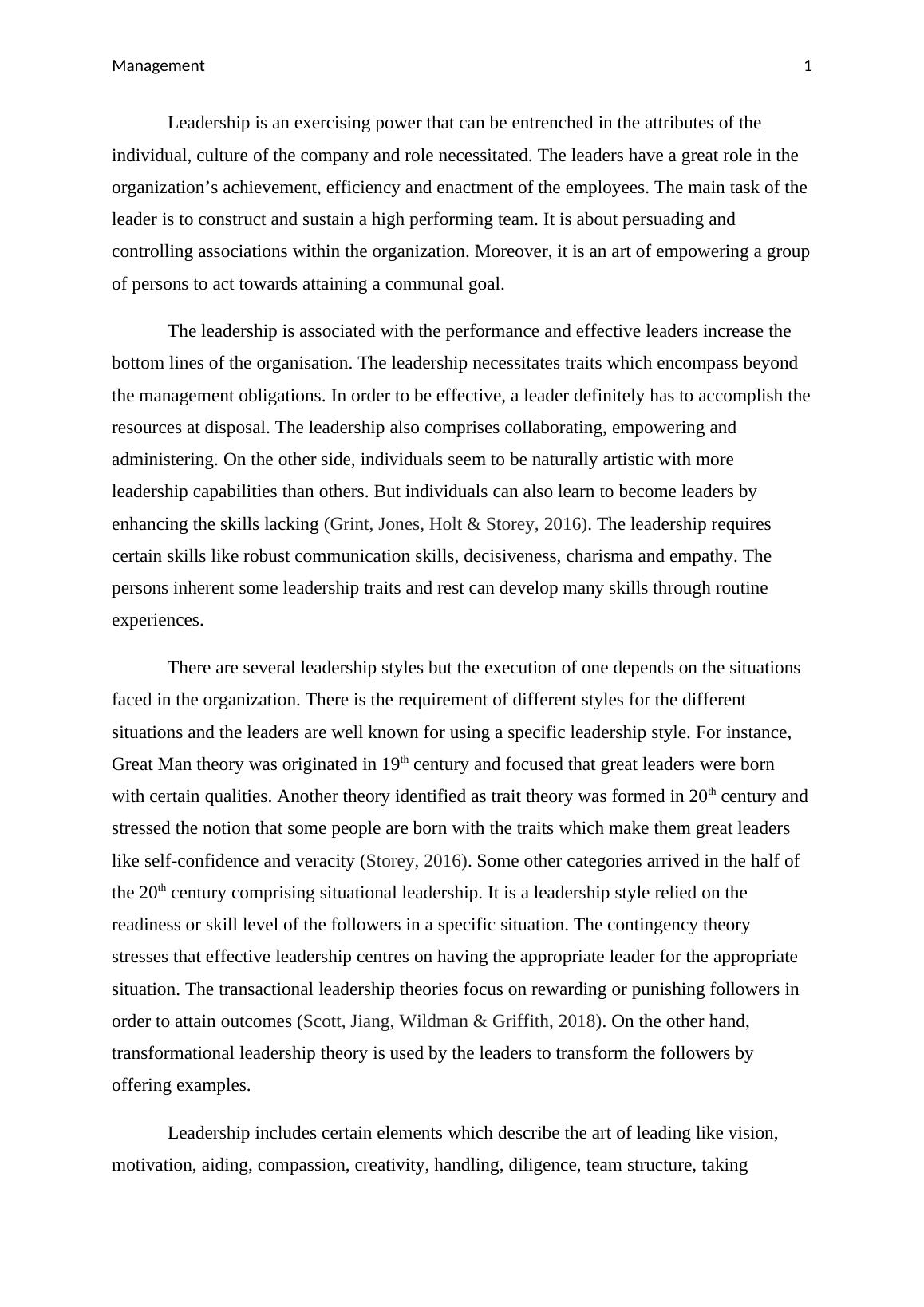Leadership and its styles in Management
4 Pages792 Words433 Views
Added on 2022-11-13
About This Document
This document explains the concept of leadership, its importance, and various leadership styles used in management. It also highlights the traits required to be an effective leader.
Leadership and its styles in Management
Added on 2022-11-13
ShareRelated Documents
End of preview
Want to access all the pages? Upload your documents or become a member.
Dynamic Leadership: A Personal Development Plan
|16
|4187
|415
Leadership in Management and Organizational Behavior Study
|11
|2967
|239
Leadership and Management Theories in Dangote Cement Group
|28
|7034
|103
Leadership Styles and Theories Adopted by Jeff Bezos
|9
|542
|312
Leadership and management theories in Woolworths Group and ASDA Group
|8
|1499
|142
Leadership and Management Theories, Styles and Factors Affecting Cultural Development in Sainsbury Plc
|28
|3294
|192


